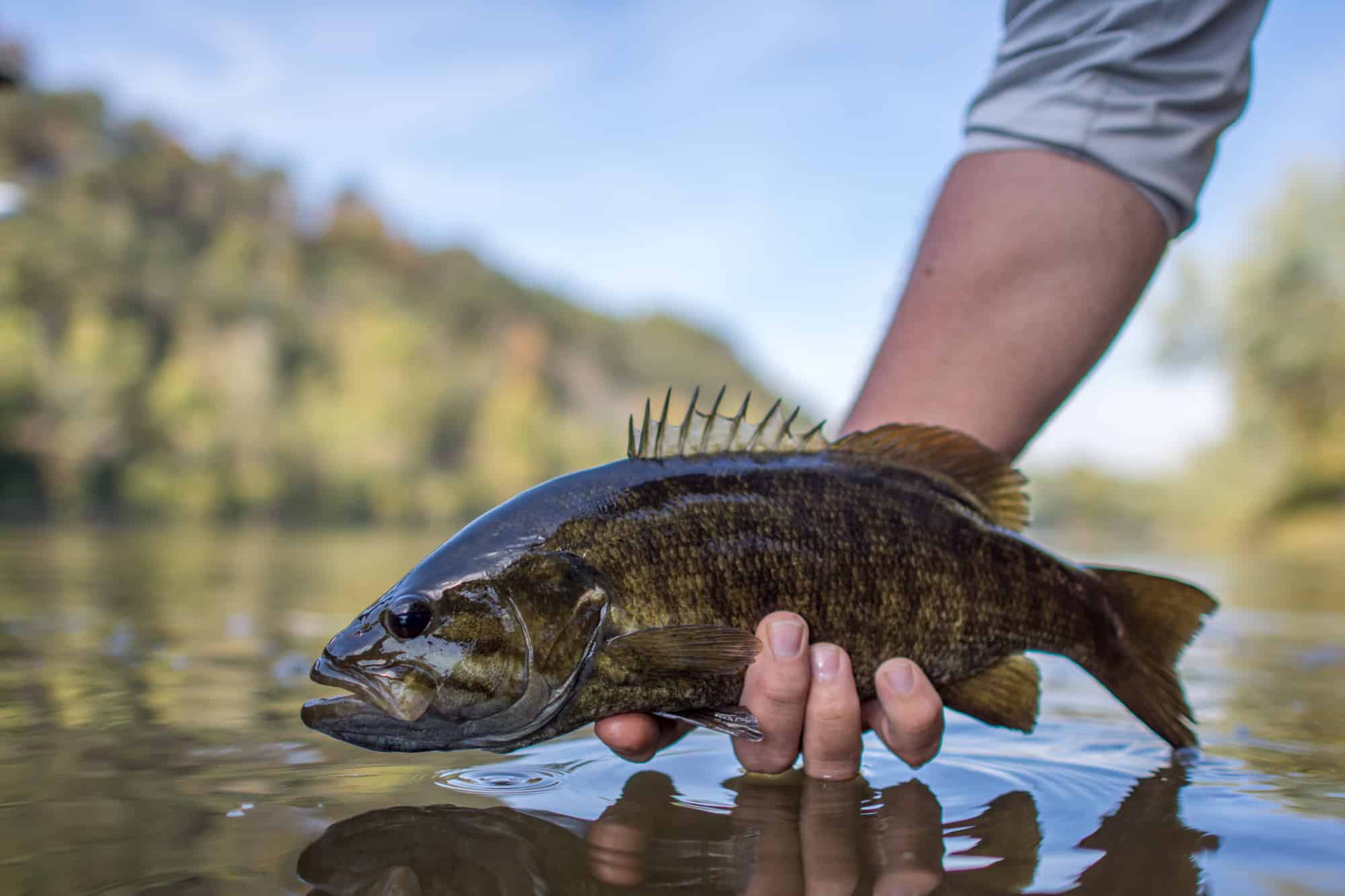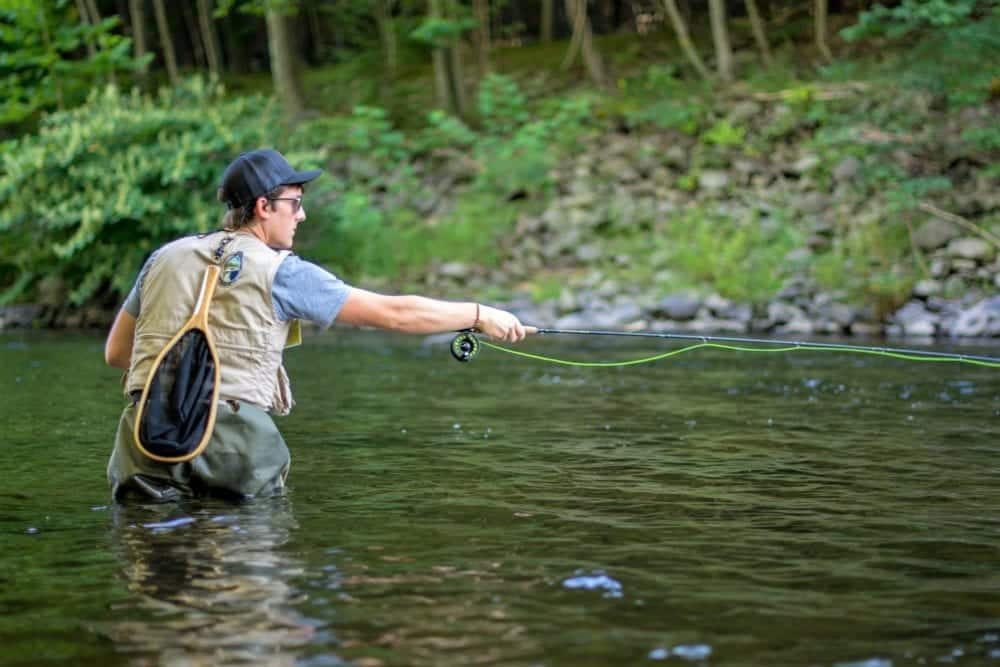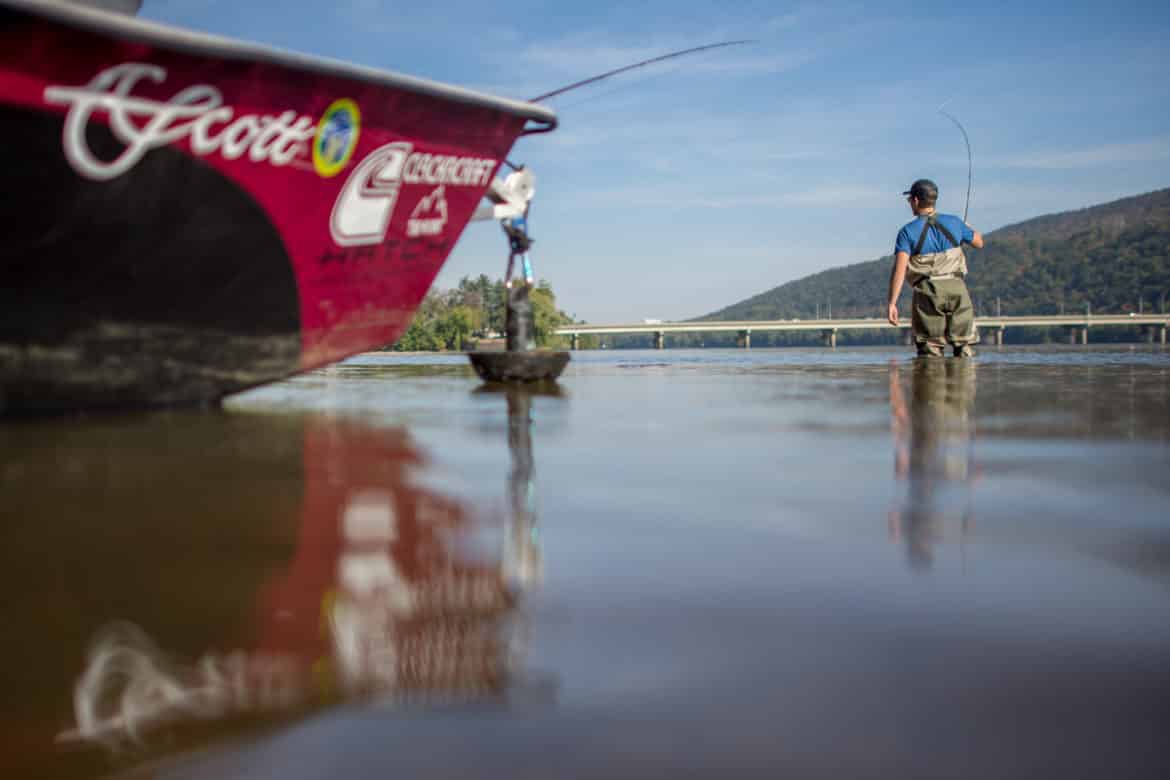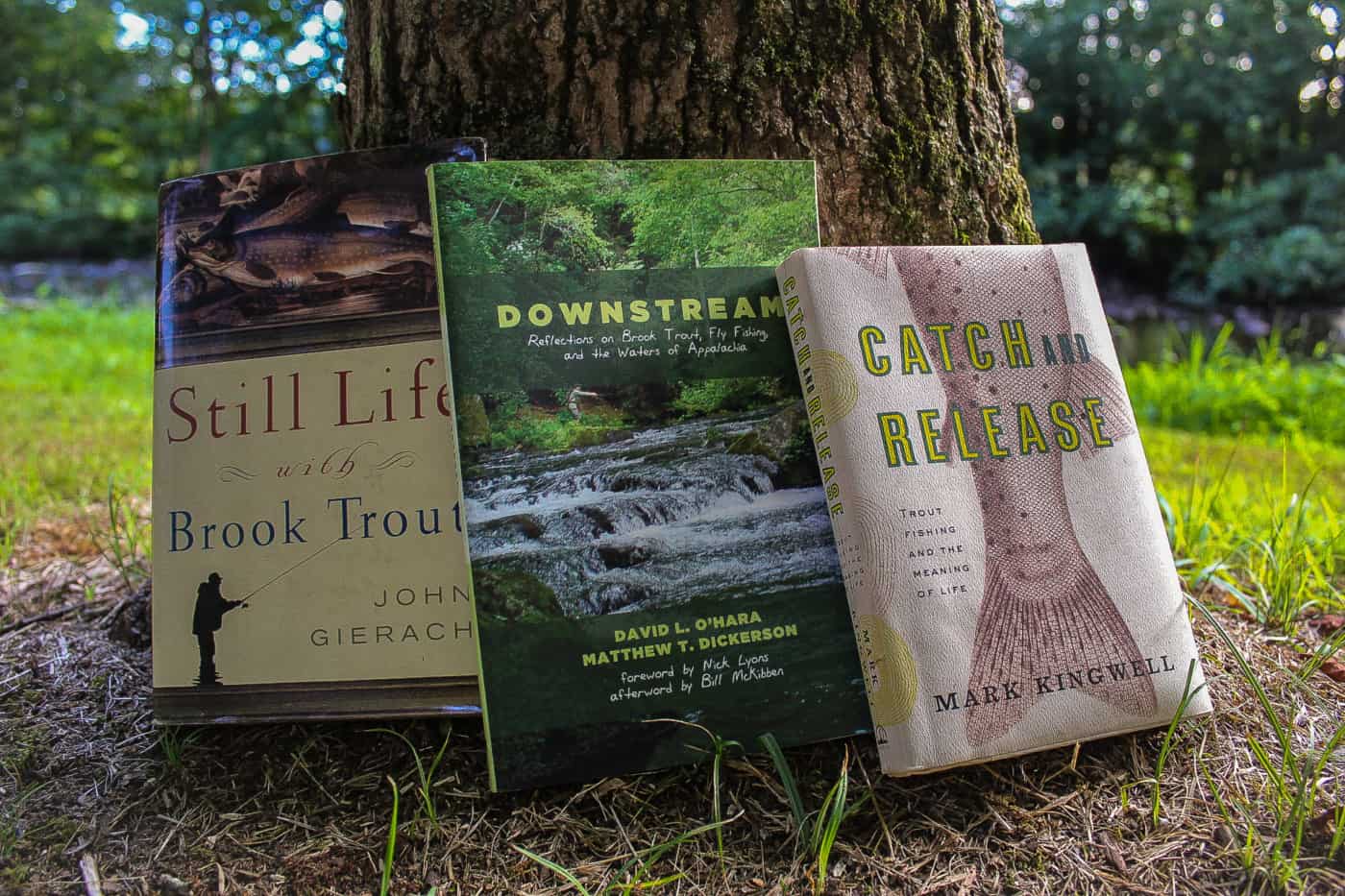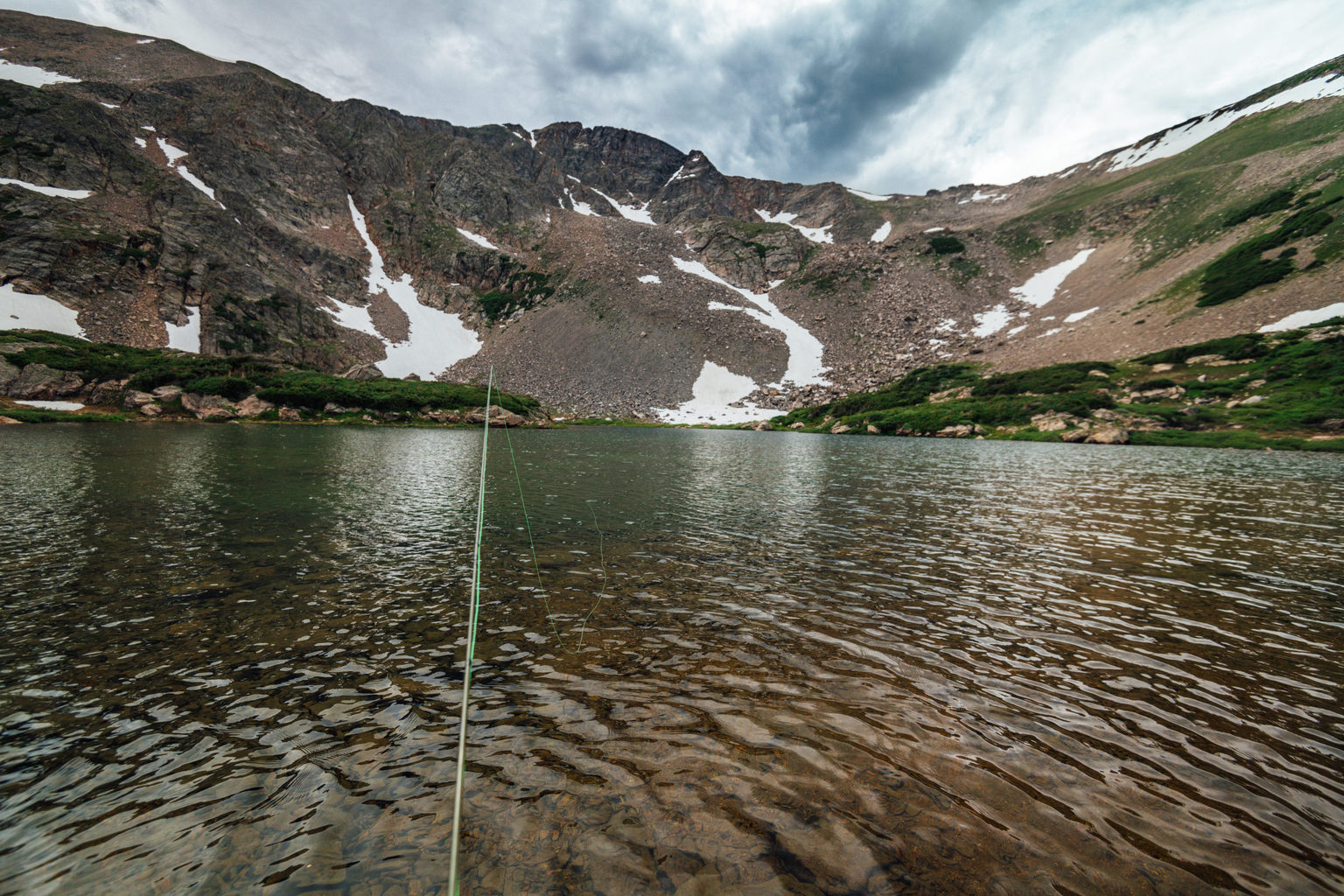Choosing the Right Color and Depth for Locating Bass
When I first started fishing for bass on the fly I tied up a handful of patterns that looked most like my favorite bass lures (or, rather, my wife did). The end result was a series of kind of bulky chartreuse woolly buggers that look perfectly fishy to me.
When I was finally able to test them out on a local bass lake, the result was unreal (to me, at least). Not only was I finding and catching some very nice fish, but they loved the flies so much, I managed to hook into a fish, lose it (and my fly), cast back to it, catch it again and get my fly back. It was exactly the kind of experience I needed to get my confidence up when it came to targeting bass on the fly.
These days, my go-to pattern has changed slightly from a bulky old woolly bugger to a more robust streamer pattern, but there are a few things that have remained constant for me in that time, the depth I’m fishing at and the colors I choose. These two things make up the bulk of my decision-making time when fishing for bass and, more often than not, lead to some very nice fish.
Depth
This is the big one. Like most fish, bass move up and down in the water column during the season. They do this because, while they like warm water, they have a sweet spot.
They don’t love water that is super hot and, as such, will sneak down into deeper water when it gets too hot (but that doesn’t mean they stop eating). Where you’re looking for bass depends on the time of year you’re fishing for them.
Early in the season, like early spring, bass tend to hold a bit deeper. You’ll have to work a little harder for them at this time of year because they haven’t quite shaken off the winter fuzz yet and are moving a little slower. This is where a full sink line and a nice meaty streamer come in handy. You get your fly down deep enough and you’ll be dragging the kind of meal you can’t say no to right across their noses.
In the late spring, they move into the pre-spawn phase and come shallower. This time of year you’ll find them hanging out in 10-20 feet of water and usually hitting anything they see. The fishing can be fast and furious at this time of year.
The post-spawn period is often the most fun. Everyone’s hanging out in the shallower water and everyone is hungry. This time of year bass are spending their time in water ranging from super shallow to 10 or so feet deep. Your favorite streamer and a floating line are almost all you need here (unless they’re on the deeper end of things, then a sink tip is the way to go).

Of course, once it gets too hot, bass will take to hiding from the heat. They’ll go deep (they get as deep as 40 feet where I am), but don’t let that dissuade you from trying. They’re still feeding aggressively at this point, they’re just a bit tougher to find.
If you’re not certain where the fish might be the best advice I can offer is work the transition zones. Things like drop-offs, ledges, and shoals, anywhere at all where it moves from shallow to deep is the best spot to start. It’ll help you get a sense of what depth the fish are holding at and let you know where best to focus your efforts.
One last piece of advice on depth, don’t be afraid to cast shallow. Like so shallow you think you’re more likely to catch a tree than a fish. Some of the biggest bass I’ve ever hooked into have been in water so shallow it’s almost not funny.
Color
Once you’ve figured out how deep the fish are holding comes the fun task of picking the right color fly.
When it comes to color selection, there are a few factors that come in to play. The biggest is confidence. Always start with a color you believe in. For me, that color is chartreuse. For you, it could be white, orange, striped, maroon or hot pink. Whatever that color is, fish it first. I say this because that isn’t necessarily going to be the right color for the particular body of water you’re fishing, but any pattern or color that you have confidence in is going to be something that you just fish better. There’s just something about the way you fish those colors you love (and patterns) that gives the fly a bit more swagger when you fish it. Fish love that swagger.
My color choices look something like this, although I rarely get past the first one in the list:
- Chartreuse
- White
- Orange
- Purple/Maroon
- Brown

Once you’ve given your favorite color a try, up next is to try a pattern that imitates what’s found in the water you’re fishing. If there are perch, tie on a pattern that has stripes and perch-like features. If there are sunfish present, throw on something with sunfish colors. I know a guy who does really well fishing for bass with a pattern that imitates rainbow trout in a lake that is filled with rainbow trout.
Water clarity and sky conditions should also be taken into consideration. The general rule is bright, flashy colors in clear water and clear, sunny days — and darker colors in darker water and cloudy days. This is because, in clear water (and sunny days), you’re going to be a lot more visible if you’re bright and shiny. Likewise, in murky water (and cloudy days), darker colors help you by creating a strong profile in the water, kind of like a big, imposing (and tasty) shadow. Having said that, if you’re still struggling to catch fish in murkier water, try something fluorescent to punch through the gloom.
The last thing to consider is how deep you’ll be fishing. Color and depth go hand-in-hand. The deeper you go, the fewer colors are visible. Red is particularly affected by this. It starts to fade around 10 feet and by the time you hit 20, it’s basically just an odd bluey-grey. As you can imagine, this doesn’t matter too much if you’re fishing shallow, but on those days when the bass go deep and hunker down, having something that can punch through the gloom can make all the difference in the world.

Sometimes, though, it can pay off to just throw caution to the wind and tie on the funkiest colored thing you’ve got in your fly box. That little bit of color that just doesn’t belong in any body of water can be just the thing to trigger a hit.
To pull it all together, the best way to make these things work together is to come up with a strategy, or at least a plan for when you first hit a lake. Pick a depth where you think the fish are going to be, or know they’re going to be, and pick a color that works for you.
Fish that way for a while and, if that doesn’t work, start to switch it up, slowly going either deeper or shallower and trying different color patterns. Sometimes you’ll know right away whether there are any bass around, other times you’ll have to just keep trying until you find the fish. They’re in there.

